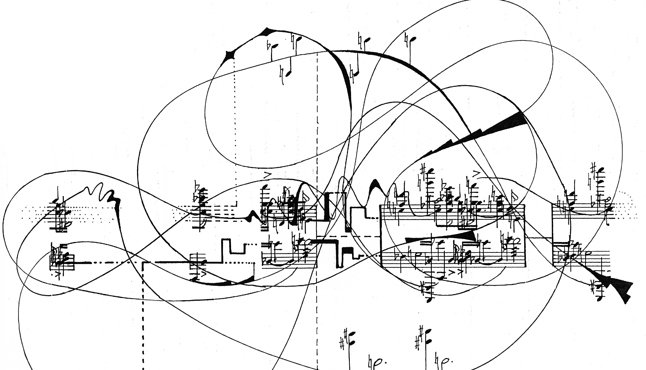Songs Have Lives of Their Own
Timeless Popular Songs
Songs that are universally appreciated are played for decade after decade and tend to span generations not only through the playing of the original recording, but also through new generations learning to actually play the songs; both how the song was traditionally performed and through the unique intricacies that arise when someone from a new generation learns to play a classic song. Not all songs can be sung by everyone, but every song can be sung and felt by more than just the original writer. Songs can be sung by multiple different people and will have a piece of each person who sings them. Sometimes the same song can take on a completely different meaning from the original singer’s intent: Take “Respect,” originally written and recorded by Otis Redding, Aretha Franklin made it even more famous because, without changing the lyrics or song structure at all, her performance of it changed the intent of the song. No longer was the song about a man demanding respect from his woman after a long day at work. Instead, the song uplifted women and demanded that they be respected in a “man’s world.” “Hurt,” originally written by Trent Reznor (Nine Inch Nails), was a desperate goodbye written from the perspective of a suicidal man in his final dark moment, but when sang by Johnny Cash, “Hurt” became a solemn reflection from an old man looking back on his long and winding life; full of regret, longing, sweet memory, love and fear.
Songs with Historical Significance
When I refer to “songs with historical significance” I’m specifically talking about protest songs, folk songs, work songs and songs of national and government significance. Some of the best examples of how songs can withstand the test of time are historical songs that discuss a particular place and/or time in history. Sometimes these songs are politically fueled, but many times they are simply written to remember a particular scene or event. Folk music by definition aims to record the world and times that the singer lives in or that the singer has experienced. We’ve not only seen deeply personal journal entries come from these songs, but also recordings of political injustice, social change and global commentary. Cotton field work songs and prison work songs are some of the most important historic songs in the American Music catalog. Many of our innovations in music, musical stylings and genres and how we perceive the definition of “music” in popular culture comes from our rich catalog of slave songs.
Religious Music
Let’s talk about gospel songs, traditional religious hymns, and modernized religious songs that also fall in the category of secular music (think Bette Midler’s “God Is Watching Us [from a distance]” or anything considered current, popularized, religious-themed music like “Christian Rock” etc.). Some of the most important songs in the American cannon are gospel songs. These songs have actually become important on a global scale due to their universal message, timeless subjects, and frequent recurrence in American popular culture. Songs like “Amazing Grace,” “In The Sweet By And By,” and “Swing Low Sweet Chariot” will never be forgotten. Keep in mind the influence that religious music has had on popular music like R&B and Soul music. Ray Charles and Stevie Wonder are just two of the thousands of musicians who brought that religious influence to the secular fore front with their music.
Symphonic Music
Music of the classic period (namely: the music of Mozart, Bach and Beethoven) was some of the first music to be written down before the advent of audio recording technology. Beside religious hymns, symphonies are some of the oldest pieces of recorded music (in this context when I use the term “recorded music” I am not addressing audio recordings, instead I am talking about music that was written down or “recorded” in some way so that it could be shared with others without the need for a performance demonstration). Symphonic compositions are also some excellent examples of composition longevity. The movements of Mozart, Bach and Beethoven are taught in music schools across the world today just as they have been for hundreds of years.
Samples and Sampling
Why are samples so important? They allow for a re-imagining of the original sounds. They also offer valuable perspective; the original sample usually means something to the sampler. Either it takes the sampler back to a special time and place from their memory, or perhaps the original music’s message or emotional theme is congruent with how the sampler feels or congruent with the feelings the sampler is trying to convey. Or perhaps the sampler simply enjoys the aesthetic qualities of the original sounds. Sometimes thinking about samples in terms of colors, rather than in terms of meaning or emotionality, can help free the sample from any preconceived notions of message. Thinking of the sample in terms of a color, makes it more of a puzzle-piece in a grander collage, rather than a center point of a message.
Samples also allow the sampler to interact with the original recording in new ways other than simply covering the song. They allow small pieces of the song to be used and re-purposed for something completely new and different from the original. Think of songs as paintings. With the use of modern recording technology and DAWS (Digital Audio Work Stations) producers can now take out single colors from these paintings, put them on a brand new mixing pallet, and begin to use those individual colors for a brand new painting of their choice. Without the original painting, that particular hue wouldn’t exist. No one would be able to mix new colors to fit that exact shade found in the original painting. So by being able to sample that color and re-purpose it, we are able to not only create something unique, but it also gives history, soul and meaning to the newly created modern “painting.”
All this is to say that, as music technology drives full force into the future it is important to remember that all music and all songs, past and present, are still, and will always be, relevant to any type of musician. In fact, the very process by which we arrived to our current atmosphere of music was based on replicating, mimicking, and eventually innovating older songs. So play whatever songs you want. Play them as close to the original as possible, or don’t. Sample the crap out of old recordings; or record your own versions and then sample that; and, of course, create brand-new songs straight from you. The bigger point here is that NOTHING IS OFF LIMITS. And as long as you feel genuine as a creator, as long as you’re honest with your work and always aim to please yourself creativity, all songs will continue to live on, continue to be relevant, and continue to influence the cannon of musical history that we have collectively created so far. Songs have lives of their own, and they are all part of the grand story of all our own lives. Music is forever.

